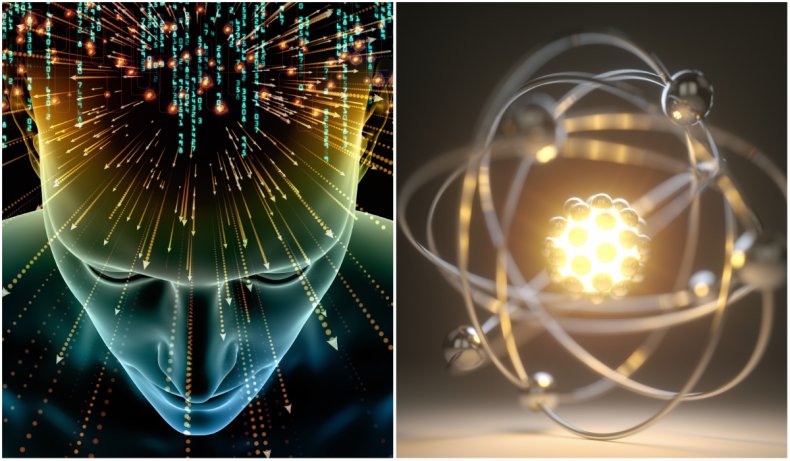AI to Be Used to Develop Nuclear Fusion Energy
Nuclear fusion scientists have developed a machine learning model to automatically spot and keep track of blobs of plasma that form inside nuclear reactors, paving the way to a better understanding of how plasma behaves.
Nuclear fusion scientists have developed a machine learning model to automatically spot and keep track of blobs of plasma that form inside nuclear reactors, paving the way to a better understanding of how plasma behaves.
Nuclear fusion is the process of joining atomic nuclei together, which releases energy. It is the same process that powers stars, including our sun.
For decades, scientists have tried to harness the energy released by nuclear fusion reactions because of the many potential benefits this form of energy generation would have. Fusion reactions are clean and do not produce greenhouse gases or large amounts of radioactive waste. They also release huge amounts of energy, and the hydrogen isotopes that fuel them are abundant.
However, fusion reactions can occur only under huge amounts of heat and pressure, which uses up a lot of electricity. As a result, scientists have not been able to get a nuclear fusion reactor to produce more energy than it needs to run. Fusion reactions are also tricky to sustain for long periods.
NEWSWEEK NEWSLETTER SIGN-UP >
 At left, a stock illustration shows a human head and digital numbers to represent artificial intelligence. At right, a stock illustration of an atom. Scientists are using machine learning to observe fusion reactions and improve their understanding of the superheated matter known as plasma.AGSANDREW/KTSIMAGE/GETTY
At left, a stock illustration shows a human head and digital numbers to represent artificial intelligence. At right, a stock illustration of an atom. Scientists are using machine learning to observe fusion reactions and improve their understanding of the superheated matter known as plasma.AGSANDREW/KTSIMAGE/GETTY
The leading approach to fusion is the tokamak, a doughnut-shaped machine that uses powerful magnets to circulate superheated matter known as plasma around in a circle. This plasma creates the conditions in which fusion can occur.
Plasma tends to form areas of turbulence, which scientists refer to as "blobs," near its outer edges. Monitoring the formation and movement of these blobs is crucial because they determine how heat and particles from the plasma interact with the inside of the tokamak.
This in turn helps inform scientists how tokamaks should be engineered. The plasma should be kept away from the reactor walls to protect the reactor itself and also to ensure that the plasma reaction stays hot and stable.
NEWSWEEK SUBSCRIPTION OFFERS >
"Plasma blobs can transport significant amounts of particles and heat far away from the main plasma, in regions where large plasma-wall interaction needs to be kept low," Christian Theiler, a plasma physics professor at the École Polytechnique Fédérale de Lausanne, a Swiss university, told Newsweek.
"Better quantifying this process in today's devices and extrapolation to a reactor is an important open question," Theiler said.
The problem is that thousands of these plasma blobs form every second, so keeping track of them individually is impossible for humans. Until now, scientists have gotten around this by using averages.
Plasma physicists have now developed a machine learning model that analyzes video footage of tokamak reactions to keep track of individual blobs and study them. This provides a much more detailed picture than the averaging technique does.
The computer model was capable of correctly identifying blobs more than 80 percent of the time in some cases, according to a Massachusetts Institute of Technology press release.
The study, co-authored by Woonghee Han, Theiler and others, was published in the journal Scientific Reports on October 28.
Han, a Ph.D. candidate in physics at the Massachusetts Institute of Technology's Plasma Science and Fusion Center, told Newsweek, "Fusion research is a complex, multidisciplinary project that requires technologies from many fields.
"Recently, machine learning and [artificial intelligence] have played a key role in important topics in fusion research, including prediction of plasma disruption in tokamak and plasma diagnostic using spectroscopy and tomography, as well as turbulence tracking in our recently published work," he said.
Publication: Woonghee Han et al., Tracking blobs in the turbulent edge plasma of a tokamak fusion device, Scientific Reports (2022). DOI: 10.1038/s41598-022-21671-w
Original Story Source: Massachusetts Institute of Technology

 Alerts Sign-up
Alerts Sign-up